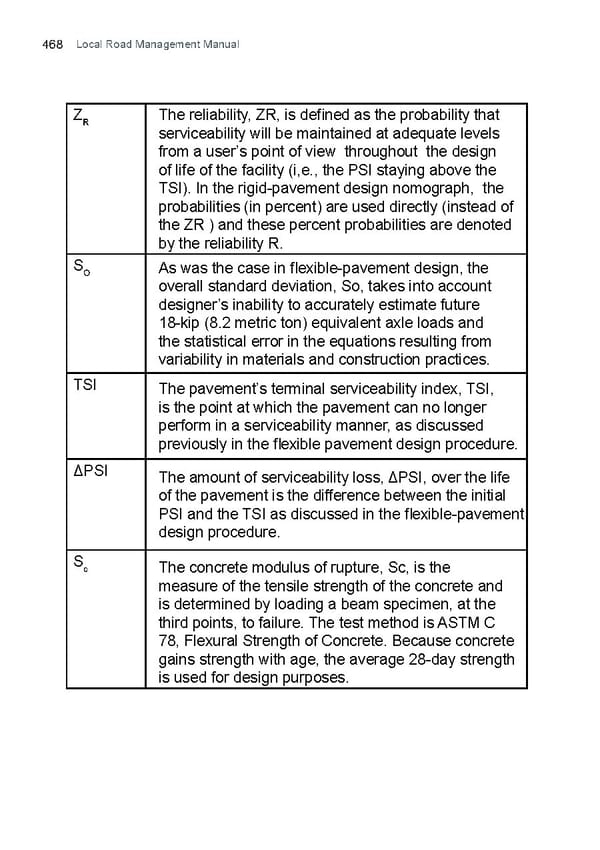Local Road Management Manual 468 Z The reliability, ZR, is defined as the probability that R serviceability will be maintained at adequate levels from a user’s point of view throughout the design of life of the facility (i,e., the PSI staying above the TSI). In the rigid-pavement design nomograph, the probabilities (in percent) are used directly (instead of the ZR ) and these percent probabilities are denoted by the reliability R. S As was the case in flexible-pavement design, the O overall standard deviation, So, takes into account designer’s inability to accurately estimate future 18-kip (8.2 metric ton) equivalent axle loads and the statistical error in the equations resulting from variability in materials and construction practices. TSI The pavement’s terminal serviceability index, TSI, is the point at which the pavement can no longer perform in a serviceability manner, as discussed previously in the flexible pavement design procedure. ΔPSI The amount of serviceability loss, ΔPSI, over the life of the pavement is the difference between the initial PSI and the TSI as discussed in the flexible-pavement design procedure. S c The concrete modulus of rupture, Sc, is the measure of the tensile strength of the concrete and is determined by loading a beam specimen, at the third points, to failure. The test method is ASTM C 78, Flexural Strength of Concrete. Because concrete gains strength with age, the average 28-day strength is used for design purposes.
 Local Road Management Manual Page 468 Page 470
Local Road Management Manual Page 468 Page 470